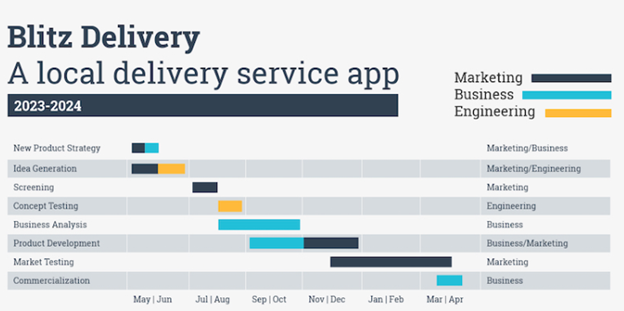
Nearly every other post on LinkedIn these days seems to be about an unfortunate mass layoff. From smaller companies to Fortune 500 mainstays, the economic downturn has affected people’s job security and stability. And all too frequently, companies tend to lay off a good portion of their marketing departments, if not the entire team. This often happens because companies believe marketing is an area they can down-size without affecting overall business operations. However, in reality, your marketing team may play a pivotal role in your company’s sales performance, regardless of what’s going on with the economy at-large.
Making the Most of Every Dollar in a Tough Economy
Marketing departments have the potential to thrive within their companies and provide sufficient value to prevent layoffs and downsizing. However, marketing expenditures can often be difficult to justify to the higher-level executives. The truth is, marketing departments have considerable power to advocate for an appropriate budget by showing the value they deliver and streamlining operations.
But how? The solution may surprise you.
Investing in project management can help marketing minimize layoffs across the company and even increase revenue. Therefore, in an environment with increasing levels of layoffs, marketing project management can be essential for guiding your company through difficult times.
Even if the country enters a recession as many analysts predicted, companies have the opportunity to stand out against their competition simply by integrating a project manager into their marketing team(s).
Project management can streamline your marketing department’s processes and create efficiencies
Project management can help your marketing department operate efficiently and effectively, thus making it easier to outline the value the department provides. There is a wide spectrum of tasks and processes within marketing that can benefit from project management expertise and best practices, but here are a few that stand out.
Goal-setting
One way to streamline the marketing department’s processes is by setting clear goals and timelines. Ideally, all your goals should follow the SMART goal framework as outlined below.
To create SMART goals, ask yourself if your goal is:
Measurable – What metrics will you use to determine if you meet your goal?
Achievable – Is your goal too ambitious? Or is it something that is reasonable and attainable?
Relevant – Does your goal align with long-term objectives? Does it make sense now?
Time-bound – How much time will be allotted for your goal?
Setting a clear goal using the SMART framework will reduce the amount of time you spend planning your goals, and will make it easier to analyze whether these goals have been successful or not later on down the road.
Project Management Platforms & Dashboard Views
Project management tools that integrate with your marketing automation software can help keep track of short- and long-term goals and timelines. In addition to the time it takes to meet your goals, you can see which key stakeholders are involved at every step of the way. Most project management platforms have various dashboard views to choose from, which can be customized for each tier of management.
For example, a list view can be beneficial for the team executing each goal. The list view allows the team to see what projects are due and the subtasks under each major task. The goal here is to give the viewer at-a-glance insights into each project and the relevant milestones and processes.
Calendar and Gantt chart views are often practical for presenting to key decision-makers to identify timelines and deliver an eagle-eye view of the project without getting overwhelmed by the minutia of tasks and subtasks.

Discover Gantt chart examples here.
Using a project management tool and optimizing their dashboards for the appropriate audience produces an efficient workflow and minimizes the time spent on report generation. Your team will have an easier time presenting ROI when they have a clear view of the department’s analytics.
Productive Meetings & Actionable Agendas
It’s no secret that people dread meetings. According to Forbes, 71% of respondents in a Harvard Business Review study believe meetings are unproductive and inefficient. The article places the number one reason employees hate meetings is the lack of structure or action plan that results in attendees going off-topic and reducing precious work time for everyone else. Creating a productive agenda ahead of time can cut down on unnecessary chatter and yield more effective meetings. Marketing requires collaboration and with the right amount of direction during meetings, your team will become more efficient in their work.
If you want to give your project manager a template for meetings, here are a few steps to follow:
- When planning a meeting, think about the purpose of the meeting.
- Identify your target results at the end of the meeting.
- Define the topics to cover or questions to solve.
- Consider target action items or discussion points for each topic, so your team understands the purpose of each item.
- Set time parameters when creating the agenda by giving each topic a set duration, and keep track of the time during the call.
Encouraging your project manager and stakeholders to follow this approach helps meetings stay focused and productive.
Communication
A common pitfall for many companies lies in current communications processes and it can drastically affect the marketing department’s productivity and delivery of value. With more communication tools than ever, marketing departments can use email, sms, Slack and Teams, among others, to communicate with their team members. Without proper Standard Operating Procedures or SOPs, disorganized communications become common and result in delays and potential losses of revenue.
Establish communications SOPs by stating which form of communication to use for asking quick questions versus requests that require a paper trail. This creates a system for tracking important conversations and minimizing the clutter or chatter of less important inquiries.
For example, if a company is using the free tiers of Slack, messages are automatically deleted after 90 days. This may be a good platform to use to ask clarifying questions, but not for sending important messages. In these cases, email may be a better tool to use so you can always pull up relevant communications and documents.
Streamlining your marketing department’s communication processes speeds up the time your team completes projects, and it leaves less room for misinformation and delays.
D3 Methodology – A Holistic Demand Generation Model to Improve Processes
Laura Pearce, PMP – Project Manager at BDO Digital suggests using Demand Gen’s proprietary D3 Methodology,a ‘holistic approach to marketing.’ When implemented properly, the D3 Methodology can give your team an idea of where they stand in their marketing maturity, and how they can get to where they want to be. If your team knows where they want to be in the future, the D3 Methodology acts as a roadmap that can get them there.
Find out where you land on the demand generation maturity curve
Reduce administrative work for your marketing team
When looking at the value and productivity coming from your marketing department, one thing to look out for is the amount of ‘non-marketing’ work the team performs. There are a couple of ways to cut down on mundane tasks and the first is marketing automation.
Marketing Automation
Teams of all sizes can benefit greatly from marketing automation, but it’s especially important when working with smaller teams. Take the time to audit your current marketing processes and identify which tasks can be automated and which need to be done by a member of your team. This will help you determine which platforms serve your department best.
During the auditing process, you may find you’ll need to cut certain platforms or add more to your stack – it all depends on the needs of your team. Some processes that can be automated are email sequences, sms campaigns, and even lead generation.
Focus on ‘quick wins’ to increase your ROI
Pearce also suggests focusing on ‘quick wins’ to start seeing an increase in ROI within a short amount of time. One way to do this is by cleaning up existing data. It’s possible data your company is holding onto may not be helping your marketing efforts, but hindering them.
For example, say you have a customer relations management (CRM) platform or an email marketing platform. It’s common for these types of databases to have incomplete or outdated information stored, especially contact information.
If these types of platform databases don’t have correct or updated information, you may be sending communications to contacts who are no longer relevant to your business. In those cases, your emails may go into spam. However, they also tank your open rates and the trustability of your domain.
The more accurate your data, the stronger your communications, and more efficient your marketing budget. Cleaning up your data can be tedious, but once done, your marketing department will likely see an rapid effect on lead generation, whether it’s the number of leads or the quality of leads. Clean data also improves the long-term processes you’ve implemented. Without good data, these processes can’t progress.
Explore our CRM & Demand Generation Marketing Automation Solutions
Prevent layoffs by implementing project management solutions into your marketing
Layoffs are an unfortunate part of the business world and usually the last resort for companies who feel they have exhausted all other options to increase profitability. However, it is possible to minimize these layoffs by properly implementing some project management strategies within your marketing. Whether you build up a project management platform for your team, outsource to a project manager, or adopt one of the other strategies you’ve read here, you can take steps to minimize your losses and potentially increasing revenue.
Take some time to evaluate your company’s marketing to determine which strategies best fit your business. You may discover you can take your marketing in a previously unexplored direction that allows you to truly tap into your company’s potential.

Laura Pearce is a Project Manager and certified Project Management Professional (PMP) with BDO Digital’s Demand Generation Group. She has over 6 years of experience in project and cross-disciplinary team management. A relative newcomer to the digital marketing world, she was an historian in a previous life and holds a Master of Arts degree in Public History from Loyola University Chicago.
The post How Project Management Can Help Marketing Minimize Layoffs and Ensure Continuity appeared first on DemandGen.





















